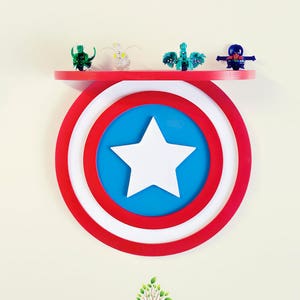
Menjelang akhir perang, ia terjebak dalam es dan selamat dalam animasi ditangguhkan sampai dia dihidupkan kembali pada hari ini. Karakter ini biasanya digambarkan sebagai alter ego dari Steve Rogers, seorang pemuda lemah yang ditingkatkan ke puncak kesempurnaan manusia oleh serum eksperimental untuk membantu upaya pemerintah Amerika Serikat dalam Perang Dunia II. Dibuat oleh komikus Joe Simon dan Jack Kirby, karakter pertama kali muncul di Captain America Comics # 1 (cover Maret 1941) dari Timely Comics, pendahulu dari Marvel Comics.Ĭaptain America memakai kostum yang dikenakan bendera bermotif bendera Amerika Serikat, dan dipersenjatai dengan perisai hampir tidak bisa dihancurkan saat ia melempar pada musuh. Pahlawan yang lahir pada tahun 1920 ini menjadi pahlawan perang Amerika Serikat saat menghadapi sekutu NAZI yang dipimpin oleh Adolf Hitler. Joshef Reinstein dengan serum super soldiernya. Memiliki musuh besar bernama Salwi Ackerman dan Baron Zemo, Rogers adalah tentara AS yang tidak memiliki kemampuan sama sekali. Komandan lapangan yang sangat cerdas dan disiplinĬaptain America adalah sosok pahlawan super fiktif dari Marvel Comics.Menguasai bela diri, taktik, dan seorang penembak jitu.



Kekuatan, kelincahan, kecepatan, dan stamina diatas rata rata manusia normal.While the art is well within the expected range of quality from a mainstream super-comics publisher like Marvel, it is less impressive than that which usually accompanies a Yang-written book, and it continues to make no real room to showcase what is Shang-Chi’s defining characteristic as a superhero, and that which differentiates him from all the other heroes he crosses paths with in this book-that is, his martial arts ability. Visually, the book remains a bit disappointing, although this volume-which Ruan draws the entirety of himself-proves stronger than the previous one. It’s not a sustainable long-term strategy, of course-for one thing, they’ve already cycled through a good chunk of the Marvel Universe-but it works fine for the length of a story arc. In addition to filling the book with other heroes and thus potentially piquing the interest of more Marvel fans, the strategy allows Yang and Ruan to pretty quickly and efficiently establish Shang-Chi, his family and his organization as central to the goings-on of the Marvel Universe.

More often than not, this involves a fight, or at least the appearance of a fight, but for varying reasons: Sometimes there’s a misunderstanding, sometimes a hero temporarily turns into a monster, sometimes Shang-Chi needs to keep up a villainous front in the eyes of other bad guys-you know, comic book stuff.Īnd so Shang-Chi and his sister team-up with Spider-Man to take down a New York City drug ring he pretends to fight Captain America at an underworld auction he comes to blows with Wolverine over recruiting his half-sister, a mutant, to either join the Society or the X-Men he breaks into the Fantastic Four’s headquarters to “borrow” an interdimensional ship of theirs he fights Iron Man over a misunderstanding regarding a weapons deal, and finally, when the various heroes all form a sort of intervention to determine if Shang-Chi’s reformed evil organization is maybe still a little too evil, our hero must face off against Thor. The Marvel Universe, the creators have a clever if perhaps uninspired strategy for ensuring interest in the book from the wider Marvel fandom: Guest-stars, and lots of them.Įach of the six issues sees the title character and his siblings/underlings in The Five Weapons Society, the evil organization of his late, evil father’s that he has assumed control of and is trying to reform into a force for good (and the comic book equivalent of the movie’s Ten Rings), crossing paths with a different hero or group of heroes. 2: Shang-Chi Vs.The Marvel Universeįor the second collection of Gene Luen Yang and Dike Ruan’s new Shang-Chi ongoing series, officially entitled Shang-Chi By Gene Luen Yang Vol.


 0 kommentar(er)
0 kommentar(er)
